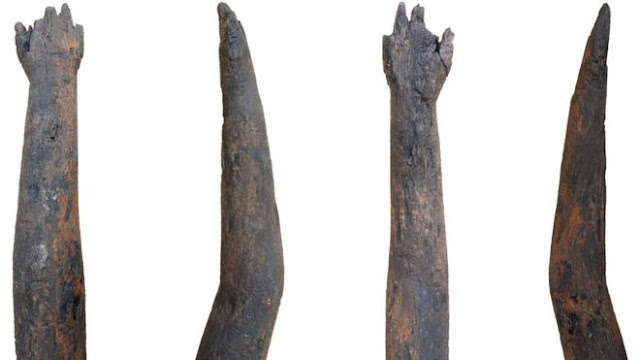During OA East's most recent excavations at Warth Park, in Raunds, Northamptonshire, a very surprising discovery was made, in the form of an unusual wooden artefact.
 |
| The arm - seen from all angles - was found in a waterlogged Roman well [Credit: © Michael Bamforth] |
In his report, he said that it had been finely carved from a single branch, which makes use of a natural curve to form the elbow, and is very well made, as no tool marks are visible on its surface. The hand is also relatively slender and gracile and so, if it’s a life-sized piece, it seems to mimic the arm and hand of a small adult or adolescent.
 |
| Archaeologist and wood expert Michael Bamforth examined the arm found at the bottom of the well [Credit: Oxford Archaeology East] |
A small fragment from the sculpture has now been radiocarbone dated, indicating that the object dates to the earlier Roman period, specifically cal AD 86-240, which also corresponds with the date of Roman pottery recovered from waterlogged deposits in the well.
 |
| The dig was being carried out ahead of further development of the Warth Park industrial estate [Credit: Oxford Archaeology East] |
Source: Oxford Archaeology [June 20, 2019]







No comments: